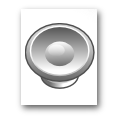Definify.com
Definition 2025
低
低
| ||||||
|---|---|---|---|---|---|---|
Translingual
| Stroke order | |||
|---|---|---|---|
| | |||
Han character
低 (radical 9 人+5, 7 strokes, cangjie input 人竹心一 (OHPM) or 人竹女戈 (OHVI), four-corner 22240, composition ⿰亻氐)
References
- KangXi: page 98, character 8
- Dai Kanwa Jiten: character 504
- Dae Jaweon: page 207, character 1
- Hanyu Da Zidian: volume 1, page 137, character 4
- Unihan data for U+4F4E
Chinese
|
simp. and trad. |
低 | |
|---|---|---|
Glyph origin
| Historical forms of the character 低 | |
|---|---|
| |
|
References:
Mostly from Richard Sears' Chinese Etymology site (authorisation),
|
| Characters in the same phonetic series (氐) (Zhengzhang, 2003) | |
|---|---|
| Old Chinese | |
| 低 | *tiːl |
| 氐 | *tiːl, *til |
| 袛 | *tiːl |
| 羝 | *tiːl |
| 眡 | *tiːl, *djilʔ |
| 岻 | *tiːl, *dil |
| 奃 | *tiːl |
| 趆 | *tiːl, *tiːls |
| 柢 | *tiːl, *tiːlʔ, *tiːls |
| 邸 | *tiːlʔ |
| 底 | *tiːlʔ |
| 詆 | *tiːlʔ, *diːl |
| 坻 | *tiːlʔ, *tjelʔ, *dil |
| 抵 | *tiːlʔ |
| 牴 | *tiːlʔ |
| 觝 | *tiːlʔ |
| 弤 | *tiːlʔ |
| 軧 | *tiːlʔ |
| 骶 | *tiːls |
| 砥 | *tjelʔ, *tjil, *tjilʔ, *tjils |
| 胝 | *til |
| 疷 | *til |
| 秪 | *til |
| 泜 | *dil |
| 蚳 | *dil |
| 彽 | *dil |
| 阺 | *dil |
| 貾 | *dil |
| 祗 | *tjil |
| 厎 | *tjilʔ, *tjɯʔ |
| 茋 | *tjilʔ |
| 鴟 | *tʰjil |
| 汦 | *kjeʔ, *tjil |
Phono-semantic compound (形聲, OC *tiːl) : semantic 亻 (“man, person”) + phonetic 氐 (OC *tiːl, *til) – a person lowering themselves, bowing.
Pronunciation
- Mandarin
- (Standard Chinese, Beijing)+
- Pinyin:
- Zhuyin: ㄉㄧ
- Wade-Giles: tih1
- Gwoyeu Romatzyh: di
- IPA (key): /ti⁵⁵/
-

- (Standard Chinese, Beijing)+
- Cantonese
- (Standard Cantonese, Guangzhou)+
- Jyutping: dai1
- Yale: dāi
- Cantonese Pinyin: dai1
- IPA (key): /tɐi̯⁵⁵/
- (Standard Cantonese, Guangzhou)+
- Hakka
- (Sixian, incl. Miaoli and Meinong)
- Pha̍k-fa-sṳ: tâi
- Hakka Romanization System: dai´
- Hagfa Pinyim: dai1
- IPA: /ta̯i²⁴/
- (Sixian, incl. Miaoli and Meinong)
- Wu
- (Shanghainese)
- Wiktionary: ti (T1)
- IPA (key): /ti⁵³/
- (Shanghainese)
| Rime | |
|---|---|
| Character | 低 |
| Reading # | 1/1 |
| Initial (聲) | 端 (5) |
| Final (韻) | 齊 (39) |
| Tone (調) | Level (Ø) |
| Openness (開合) | Open |
| Division (等) | IV |
| Fanqie | 都奚切 |
| Reconstructions | |
| Zhengzhang Shangfang |
/tei/ |
| Pan Wuyun |
/tei/ |
| Shao Rongfen |
/tɛi/ |
| Edwin Pulleyblank |
/tɛj/ |
| Li Rong |
/tei/ |
| Wang Li |
/tiei/ |
| Bernard Karlgren |
/tiei/ |
| Expected Mandarin Reflex |
dī |
| Zhengzhang system (2003) | |
|---|---|
| Character | 低 |
| Reading # | 1/1 |
| No. | 2234 |
| Phonetic component |
氐 |
| Rime group |
脂 |
| Rime subdivision |
1 |
| Corresponding MC rime |
低 |
| Old Chinese |
/*tiːl/ |
Definitions
低
- low (of height)
- low (of quantity); behind average
- low (of voice); quiet; soft
- to lower; to hang (one's head); to bend; to bow
Compounds
Derived terms from 低
|
|
|
Japanese
Kanji
低
- low
- short
- humble
Readings
Korean
Hanja
低 • (jeo) (hangeul 저, revised jeo, McCune-Reischauer chŏ)
- This term needs a translation to English. Please help out and add a translation, then remove the text
{{rfdef}}.
Vietnamese
Han character
- This term needs a translation to English. Please help out and add a translation, then remove the text
{{rfdef}}.
